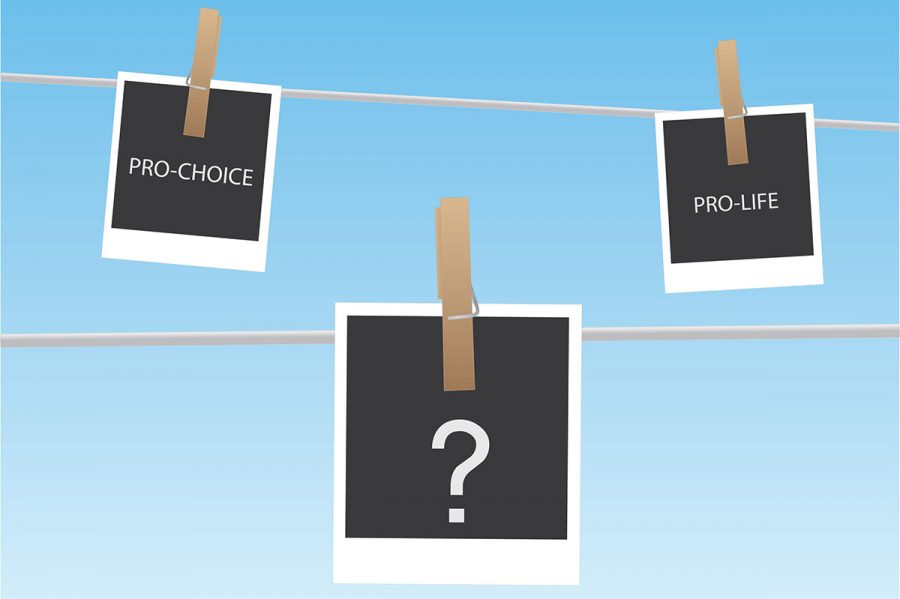Unplanned Parenthood
A discussion of the necessary evils of abortion
More stories from Taylor Hagmann
Photo by SUBMITTED
Supporting abortion rights or opposing abortion? It isn’t always a clear-cut decision.
Few things divide people more than the discussion on abortion. Is it moral? Should it be legal? When does life start? Is it considered murder? There are a lot of deep, philosophical questions that surround the issue.
New York recently amended the New York State Reproductive Health Act S.240, which states under Article 25: A, Subsection 2599-AA, “2. EVERY INDIVIDUAL WHO BECOMES PREGNANT HAS THE FUNDAMENTAL RIGHT TO CHOOSE TO CARRY THE PREGNANCY TO TERM, TO GIVE BIRTH TO A CHILD, OR TO HAVE AN ABORTION, PURSUANT TO THIS ARTICLE.“
This update, which made late-term abortions legal, has once again brought abortion to the forefront of a lot of minds. However, I’m not here to argue the morality of the issue; rather, I’d like to talk about some of the facts.
Although I, personally, would never get an abortion, I understand that people will get abortions whether I like it or not. Regardless, I’d much prefer people to have a safe and sanitary place to get it done, with a professional who knows what they’re doing — someone who won’t make preventable mistakes or cause potentially life-threatening complications. And as someone who is against abortion in general, what is the difference between an abortion at 6 weeks versus an abortion at 16? Or 26? Either way it’s ending a pregnancy. But if you believe that conception equals the start of life, then what does it matter if it’s early or late?
According to the American College of Obstetrics and Gynecology, in an article titled “Second Trimester Abortion,” about three in 10 women get at least one abortion, and of the 1.2 million abortions in 2008, late-term abortions — which are abortions that occur after 23 weeks — are very rare. Only 1.3 percent of abortions occur at or after 21 weeks’ gestation.
Late-term abortions are only conducted when medically necessary, such as in cases where the mother’s life is in danger if the pregnancy were to continue or where the child has a condition that would make life outside of the womb painful or totally impossible.
Despite the low percentage of women who need a late-term abortion, shouldn’t they still be allowed a safe environment?
Sam Blesi, a sixth-year environmental public health student, is an adamant abortion-rights supporter.
“I think that, as a man, I’m not actually allowed an opinion, since I don’t have to carry a child to term.” Blesi said. “However, I believe it’s very important — critical — I believe it’s critical. Critical for women to have access to abortions for a number of reasons — be it life-saving procedure, be it, you know, a case of rape, be it a case of incest, be it (they) can’t afford a child. Additionally, fetal tissues acquired from abortions could be used to develop life-saving medical procedures.”
Occasionally, fetal tissue is used in research. According to a CNN article titled “How exactly fetal tissue is used in medicine,” vaccines are one of those potentially life-saving treatments that uses aborted fetal cells, but they’re not the only thing. Stem cells are also being used to find treatments and cures for diseases such as Alzheimer’s, Parkinson’s and Huntington’s.
Despite my distaste for abortion overall, there are a lot of reasons out there for the practice to at least be legal and allowed. Whether it be helping to provide treatment and cures for disease. Or if it’s for the mother’s or child’s life, health and wellbeing. Or, simply to provide safe, quality care, the abortion rights argument is ambiguous to say the least.
Hagmann can be reached at hagmantc5161@uwec.edu.

